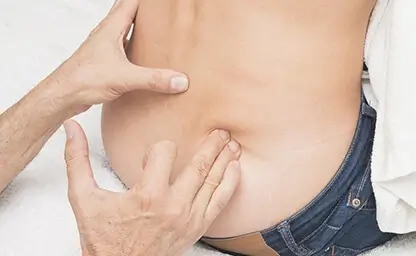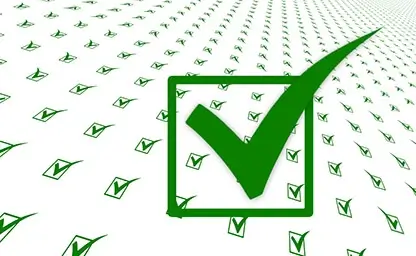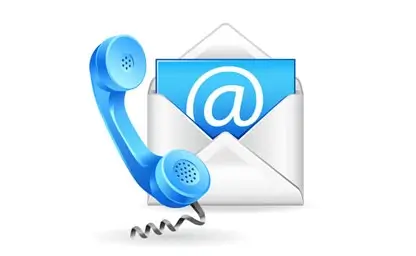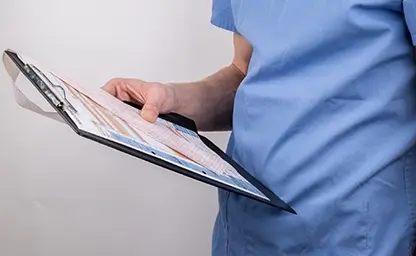

Grigori Tafi
Modern manual therapist
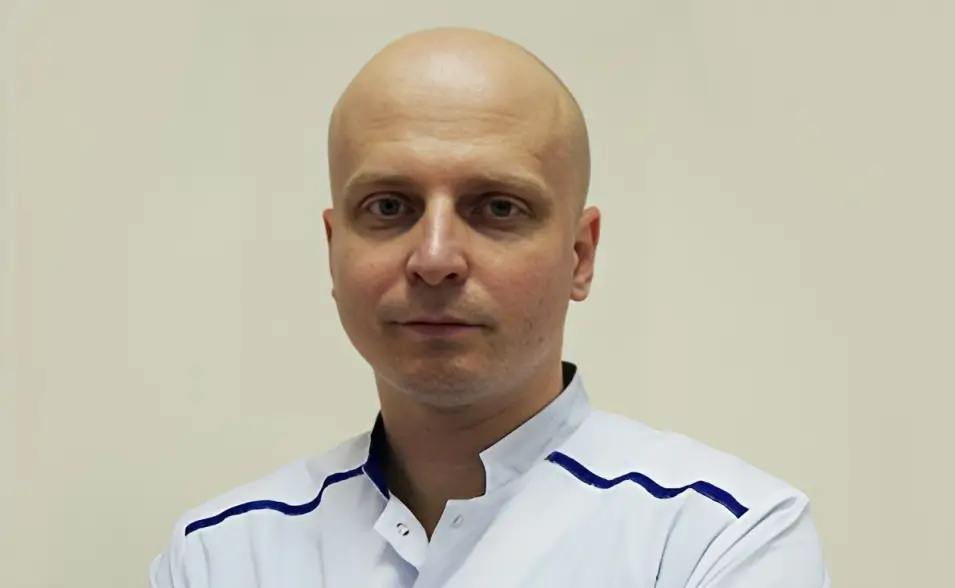
My education and work experience
University education:
2001 - 2007 Uzhgorod National University, Faculty of Medicine. Qualification: Doctor of Medicine (MD)
Postgraduate and additional training:
- 2007 – 2009 Uzhgorod Faculty of Postgraduate Education, internship: Internal Diseases
- 2010 (6 months) Kiev Medical University, specialty: Doctor of Alternative Medicine, including a two-month course of manual therapy and osteopathy, as well as acupuncture, herbal medicine, and apitherapy
- 2016 (6 months) Lviv Medical University, postgraduate education courses: Alternative therapies, also with a course in manual therapy and osteopathy
- 2021 (3 months) National Medical Academy of Post-Graduate Education Named After P.L. Shupik, specialization courses: Doctor of sports medicine
- 2008 Transcarpathian Regional Medical and Physical Culture Dispensary, professional development courses: "therapeutic massage and instructor of therapeutic physical exercising"
- 2021 "Kyiv, "Rehabilitolog" School, courses: Soft manual therapy techniques
Self-education. My sources - experts and authorities
- Which world medical scientists have had the greatest influence on my formation as a specialist?
- Dr. Philip Greenman, professor Michigan State University, excellent educational materials and a scientific approach to osteopathy and manual medicine.
- Jean-Pierre Barral, is a well-known French osteopath who discovered the whole world of visceral osteopathy and neural manipulation.
- Janet G. Travell, is a prominent physician and scientist who has made the greatest contribution to the study of the phenomenon of myofascial pain, the most common cause of pain.
- Brian Mulligan, Robin McKenzie та Geoffrey D. Maitland, New Zealand and Australian physical therapists who made a breakthrough in painless and effective manual joint therapy.
- David Butler, a physiotherapist, Australian, one of the founders of neurodynamics and a pioneer in the diagnosis and treatment of nerve tissue mobility disorders.
- Luigi Stecco, physiotherapist, Italian, in my opinion, the most well-structured and scientifically based approach to the diagnosis and treatment of fascial disorders. As you can see, a significant part of the top is occupied by non-classical osteopaths. Why is this so? Because one of the main principles of my work is the evidence-based method and detailed diagnosis of biomechanics disorders, and it just so happens that physical therapists have done a lot for this. The list is certainly not complete, learn from the best professionals!
Work experience:
- 2010 – 2018 Clinical Health Resort "Karpaty", Transcarpathia. A lot of interesting patients came for rehabilitation, an excellent practice.
- 2019 – 2020 "KinesisLife" Medical Center for Kinesitherapy, Kyiv. Here, in addition to my osteopathy, I became even more familiar with manual muscle testing and therapeutic exercises.
- 2021 - 2022 St. Martin's Hospital, Mukachevo, I expanded my knowledge of a related topic - sports medicine, which is a very interesting area.
- 2022 - 2025 Wellness center "Vertebra", Uzhhorod. I'm perfecting diagnostic algorithms and delving deeper into understanding biomechanics and its disorders and their possible manifestations.
- 2025 – "Calm & Cure" Center for Massage, Kinesiotherapy, and Osteopathy, Prague and Brno. A synergy of manual therapy and therapeutic movement, along with a growing interest in psychosomatics.
- 2010 – osteopath.blog, my informational online project dedicated to osteopathy and manual therapy. My working languages: English, Ukrainian, Russian, Czech, Spanish.
15 years of development in the field of osteopathy and manual therapy
Massage and exercise therapy courses while studying at the University
Back in university I became very interested in anatomy, biomechanics, different methods of improving and maintaining health. At the same time I finished massage courses. This is where direct work with the body began. Gradually developed palpatory skills, such as determining the texture of tissues, the volume of movements, symmetry and their violations. The knowledge of anatomy found its practical application.
My own experience as a patient
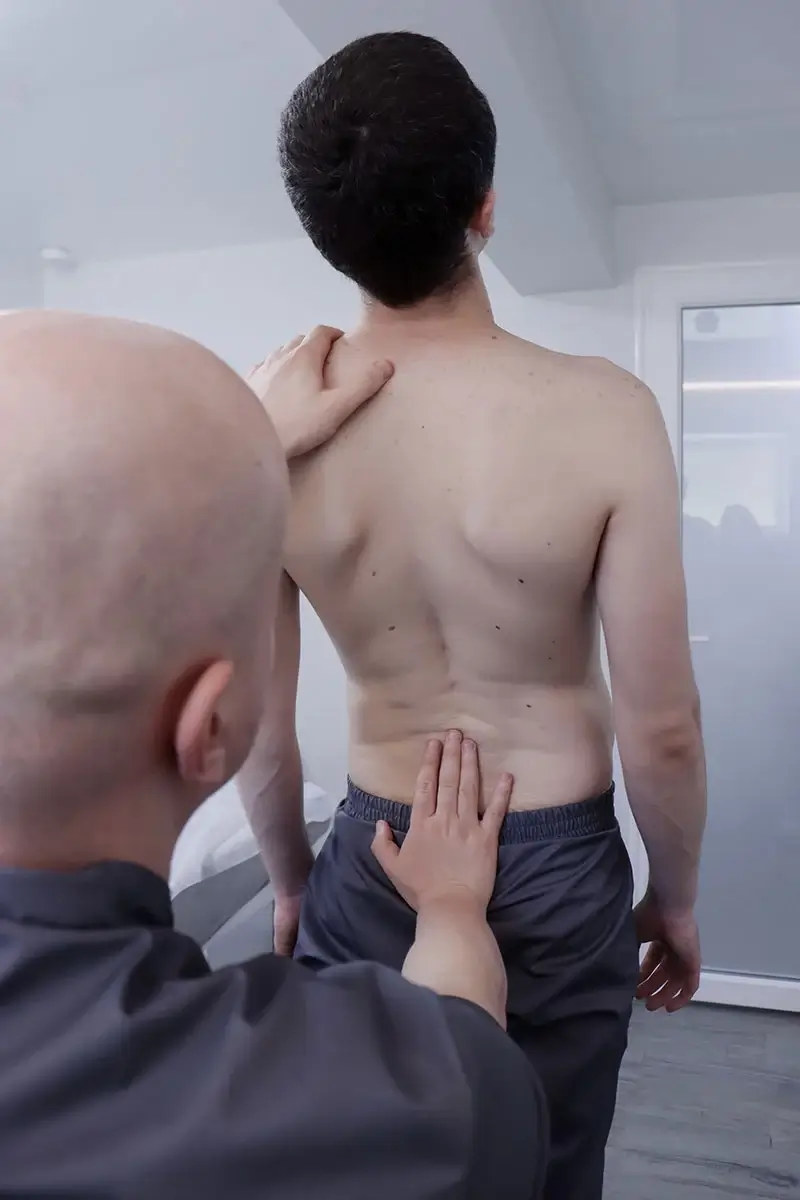 My journey in musculoskeletal medicine started with my own health problems (severe headaches, pain and blockage of the neck on the left side). Although by that time I had already graduated from university, it did not add any clarity to the cause, and explanations like "osteochondrosis, myositis, something pinched, inflammation, vessels..." did not suit me. Having practical experience in massage I started to dig in this direction. This is how I became acquainted with myofascial pain syndrome - the most common cause of pain in general, the cause of more than half of headaches, 60-70% of neck and low back pain. Interesting? Yes, very.
My journey in musculoskeletal medicine started with my own health problems (severe headaches, pain and blockage of the neck on the left side). Although by that time I had already graduated from university, it did not add any clarity to the cause, and explanations like "osteochondrosis, myositis, something pinched, inflammation, vessels..." did not suit me. Having practical experience in massage I started to dig in this direction. This is how I became acquainted with myofascial pain syndrome - the most common cause of pain in general, the cause of more than half of headaches, 60-70% of neck and low back pain. Interesting? Yes, very.
Having cured my myofascial pain syndrome (referred tension headaches, levator scapula muscle syndrome) with the help of Trigger point myotherapy massage and Post-Isometric Relaxation (stretching) and having felt the effectiveness of this approach on my own skin, I decided to go deeper into this issue. "Myofascial Pain" by Travell and Simons became my board book. Having mastered this not insignificant work (1800 pages) I paid attention to the most adequate methods of treatment of this dysfunction. In addition to the methods described by Janet Travel, the most elaborate and comprehensive approach, from my point of view, is neuromuscular therapy (Leon Chaitow).
Modern manual therapist - the first official specialization courses
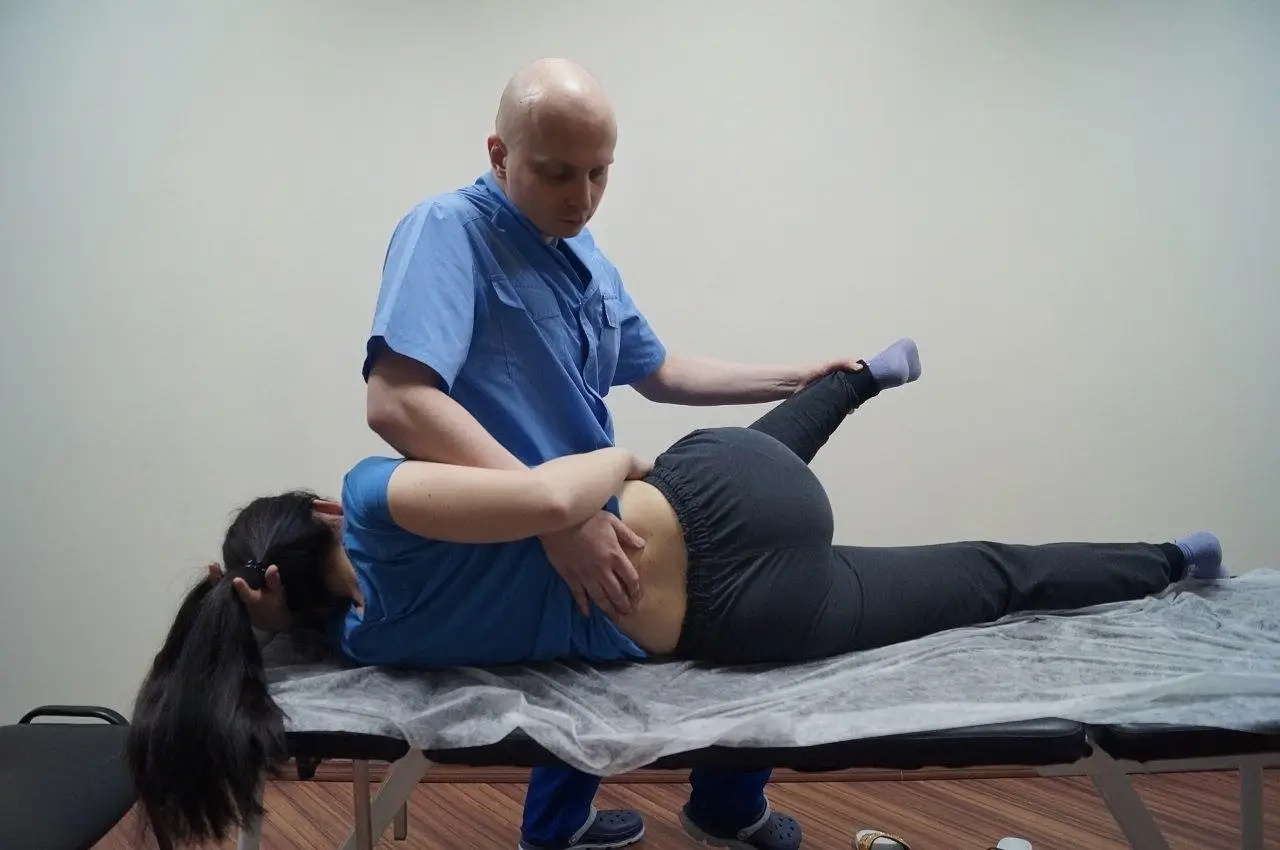 At the same time I went to the specialization courses in UANM, where I was impressed by the deep knowledge and professionalism of the teachers (Parakhin Anatoly Ivanovich and Roman Antyukhov). There I got acquainted not only with biomechanics and its disorders, manual therapy, but also with a huge field of medicine - osteopathy. By applying osteopathic methods of diagnosis and treatment, the principles began to understand more deeply the disorders in patients. Some of these principles, constantly confirmed by my practice: pain is not always where the problem is, the body is a single and holistic mechanism, remove the key lesion and the problems will go away, do not impose treatment on the body, but help it find a way out.
At the same time I went to the specialization courses in UANM, where I was impressed by the deep knowledge and professionalism of the teachers (Parakhin Anatoly Ivanovich and Roman Antyukhov). There I got acquainted not only with biomechanics and its disorders, manual therapy, but also with a huge field of medicine - osteopathy. By applying osteopathic methods of diagnosis and treatment, the principles began to understand more deeply the disorders in patients. Some of these principles, constantly confirmed by my practice: pain is not always where the problem is, the body is a single and holistic mechanism, remove the key lesion and the problems will go away, do not impose treatment on the body, but help it find a way out.
Gradually, I implemented such methods as:
- Mobilizations and articulation techniques for joints (including global osteopathic treatment). Later supplemented with mobilizations with movement - a very physiological and effective modern manual therapy method. And Still's techniques - an interesting combination of direct and indirect approach (by Richard van Beskirk).
- Muscle energy techniques have been added to post-isometric relaxation, to work with joints - one of my favorite methods (soft, safe, precise, affects both muscles and joints, and reflex regulation at the spinal level). By Phillip Greenman, Fred Mitchell Jr, Tom Ockler.
- Myofascial release has joined my longtime use of Deep Tissue massage, a direct method. And the indirect myofascial release and biodynamics, which have no limits to perfection.
- Positional techniques are very interesting and safe even in acute cases: Strain Counterstrain (by Jones) and Facilitated Positional Release (by Shiovitz).
- Fascial Manipulations, including for internal dysfunctions, have significantly increased the understanding of the global interrelationships of different parts of the body, and the possibilities of treatment.
With the growth of palpation skills, my armamentarium expands
Thanks to the palpatory skills acquired over the years of practice (sensation of tissue texture, boundaries of mobility, force lines of fascia tension, sensation of release, passing of the wave through the tissues), it became possible to begin to master such directions of osteopathy as:
- Cranial, Craniosacral Osteopathy - work with the skull, brain membranes, liquor dynamics. A crucial part of the practice, given its central position and influences on all other organs and systems of the body.
- Visceral osteopathy - work with internal organs, violations of their mobility, blood supply, innervation, adhesions, compression. Given the frequency of disorders and the abundance of interconnections with other systems and influence on the body - no less important part of a holistic approach.
- Recoil (rebound) - a gentle, subtle method used for a wide variety of dysfunctions. Some techniques I already use, for example on pelvic ligaments.
- Lymphatic techniques (including main lymphatic drainage). A whole group of techniques for working with the lymphatic system. This also includes neuro-lymphatic reflex therapy according to Chapman.
- Neurodynamics - work with nerve tissues, disorders of their mobility, compression. Really good for the nerve tunnel-compression syndromes.
- Kinesiotaping (special fixing patch) - a method that will expand the Mulligan taping I use. It will also allow to provide therapeutic effect for a longer time and for more pathologies.
The logical next step is online consulting
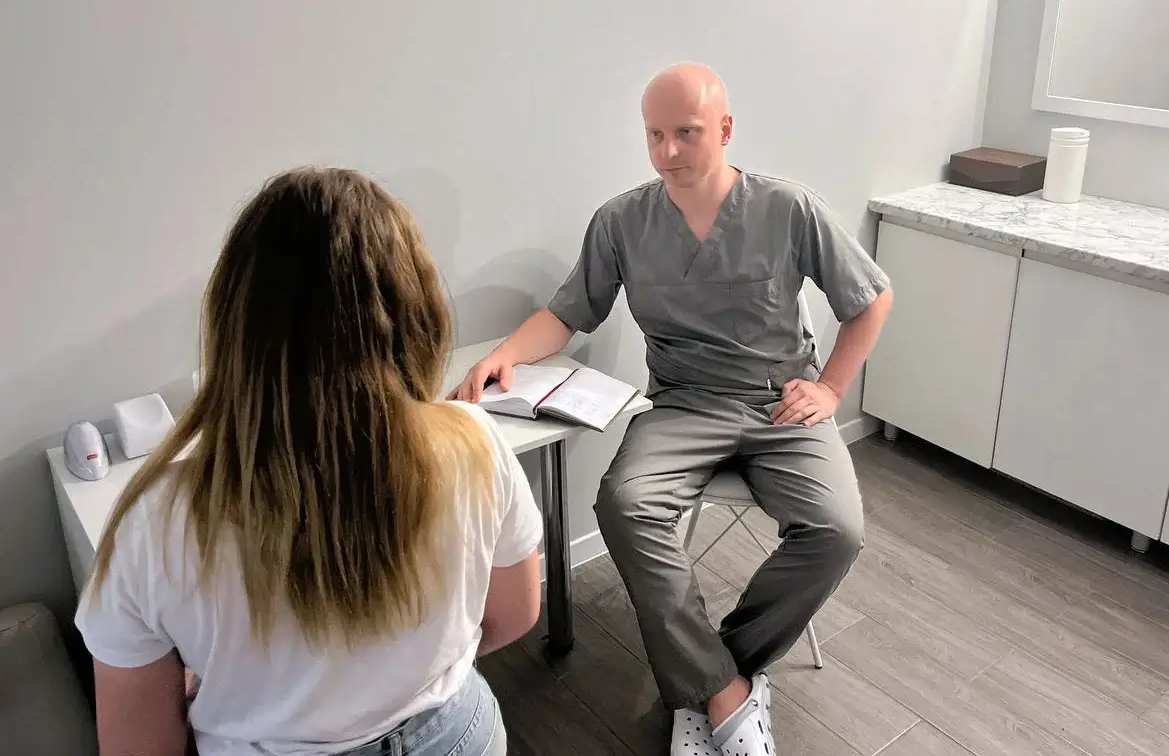 In recent years, I have been actively engaged in the study, development of new and adaptation of already known approaches to osteopathic counseling online. Initially there was a great interest in those directions in which there is elaborated and systematized independent work of the patient. The topic is as interesting as it is profound.
In recent years, I have been actively engaged in the study, development of new and adaptation of already known approaches to osteopathic counseling online. Initially there was a great interest in those directions in which there is elaborated and systematized independent work of the patient. The topic is as interesting as it is profound.
Given the huge number of old and modern approaches, methods and techniques (there are more than 1000) in the the manipulative therapist arsenal, there is a reasonable question: "And what should be applied to this particular patient?". The answer to it, an adequate answer to it is possible only after the most accurate, necessary in this case, diagnosis (general clinical, osteopathic, orthopedic, neurological, instrumental). Sometimes a single, correctly chosen and performed technique will eliminate the key lesion and all other symptoms will disappear on their own. Sometimes the answer will be, "Nothing. Another treatment is indicated." And the main principle of medicine, "Do no harm!" comes into play.
My social networks:
- My Ukrainian-language Instagram
- Instagram in English and Spanish
- English-language Linkedin
- Russian-language telegram channel
Write on WhatsApp
Write on Telegram
